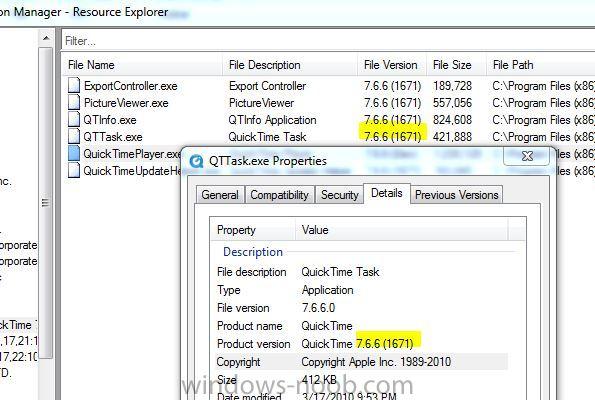Search the Community
Showing results for tags 'Software inventory'.
-
I have been getting lot of sms software inventory processor errors. I turned off the Software Inventory from client settings but that hasn't fixed the issue, I still keep getting these error messages. BADSINV folder is getting filled up with huge number of files, the size of the folder has reached 25 GB now. Error message is: Software Inventory Processor failed to process software inventory file "C:\Program Files\Microsoft Configuration Manager\inboxes\auth\sinv.box\abc.SID," and has moved it to "C:\Program Files\Microsoft Configuration Manager\inboxes\sinv.box\BADSinv\xyz.SID." Is there any solution for this? It was all working fine and just started happening few weeks ago. I can see on what date we started getting these errors, I didn't make any changes on that day. There is other SCCM Admin but he's not sure what might have lead to this as he's been making lot changes. Also, how do I clear the BADSINV folder? Thanks, Bunny
-
Hello, comrades! I've created the report "Products from .exe files"- and it's working in a strange way. I.e. I'm looking for SW product '222'. OK, I find it on computers "aaa", "bbb", 'ccc'. Particulary, i find this file at '\\bbb\d$\install\222'. But on computer 'bbb' drive D have been changed a month ago and there the directory 'd:\Install' not exists at all. Is there a chance that "Software Inventory" are put to some kind of cache? Any ways do drop the cache? Thank you in advance! ---------------------------------------------- Script looks like this: ------------------------------------------------- SELECT DISTINCT SYS.Netbios_Name0, RIGHT(v_GS_SYSTEM_CONSOLE_USAGE.TopConsoleUser0, LEN(v_GS_SYSTEM_CONSOLE_USAGE.TopConsoleUser0) - 9) AS PrimaryUser, SP.CompanyName, SP.ProductName, MAX(SP.ProductVersion) AS ProductVersion, v_GS_NETWORK_ADAPTER_CONFIGURATION.IPAddress0 AS IPAddress, v_GS_SoftwareFile.FileName, v_GS_SoftwareFile.FileDescription, v_GS_SoftwareFile.FilePath, v_GS_LastSoftwareScan.LastScanDate FROM v_GS_SoftwareProduct AS SP INNER JOIN v_R_System AS SYS ON SP.ResourceID = SYS.ResourceID LEFT OUTER JOIN v_GS_SYSTEM_CONSOLE_USAGE ON SYS.ResourceID = v_GS_SYSTEM_CONSOLE_USAGE.ResourceID INNER JOIN v_GS_COMPUTER_SYSTEM ON v_GS_COMPUTER_SYSTEM.ResourceID = SYS.ResourceID INNER JOIN v_FullCollectionMembership AS fcm ON fcm.ResourceID = SYS.ResourceID INNER JOIN v_Collection AS Coll ON Coll.CollectionID = fcm.CollectionID AND Coll.Name = 'All Workstations' INNER JOIN v_GS_NETWORK_ADAPTER_CONFIGURATION ON SYS.ResourceID = v_GS_NETWORK_ADAPTER_CONFIGURATION.ResourceID INNER JOIN v_GS_SoftwareFile ON SP.ProductID = v_GS_SoftwareFile.ProductId INNER JOIN v_GS_LastSoftwareScan ON SYS.ResourceID = v_GS_LastSoftwareScan.ResourceID WHERE (SP.CompanyName LIKE '%222%') AND (v_GS_NETWORK_ADAPTER_CONFIGURATION.IPAddress0 IS NOT NULL) GROUP BY SYS.Netbios_Name0, RIGHT(v_GS_SYSTEM_CONSOLE_USAGE.TopConsoleUser0, LEN(v_GS_SYSTEM_CONSOLE_USAGE.TopConsoleUser0) - 9), SP.CompanyName, SP.ProductName, v_GS_NETWORK_ADAPTER_CONFIGURATION.IPAddress0, v_GS_SoftwareFile.FileName, v_GS_SoftwareFile.FileDescription, v_GS_SoftwareFile.FilePath, v_GS_LastSoftwareScan.LastScanDate
-
Hello! Win 10 on devices, SCCM version is 1810, SCCM clients on devices are actual version. I've used the SCCM SI to find devices with the certain .EXE files in order to delete these files. Something like "c:\Somestuff\111.exe", "c:\Install\Somestuff\111.exe" OK, ~40 devices were found, files (and folders containing them) were deleted and I run the report again. Surprisingly, ~10 devices still showed that these folders and files are exist (let's call them "bad"). For quick check I've wrote the SQL query (it's working fine for "bad" and "good" devices) and started experiments. 1. First of all I've checked that the whole Software Inventory "chain" works OK on both Client and Server sides. It does!. No errors in logs, no bad files in sccm_Inbox. 2. Tried to run Full SI instead of Delta (you know, deleting this 00000000-0000-0000-0000-000000000002 class and rerun). 3. Tried to re-install SCCM client with complete uninstall and deleting all Windows\CCM folders (and reboot after every action). 4. Tried uninstall SCCM Client, remove device from console (SQL query showed zero results), add device back to SCCM, install the client (and reboot after every action). 5. Step 4 with checking WMI classes (and reboot after every action)... -------- Well, after all the efforts the SQL query still shows me these damned, non-existing "c:\Somestuff\111.exe", "c:\Install\Somestuff\111.exe"!! The only one way I've succeeded was the reinstall of Windows on one of "bad" device. After that these obsolete files disappeared from DB and all other .exe were listed correct. I'm sure for 101% that the problem is hidden somewhere in Windows. Does anyone have an idea where the information "is stuck" in OS and what can I try to get rid of it without reinstall of Windows? Thank you for your time and ideas. Sincerely, Maestro PS. And moreover! I don't see neither these folders nor files in Resource Explorer! I'm completely stuck here...
-
I'm attempting to run a software inventory report to find a specific file and version on our devices. The problem is when I run the report, I get no results. I've verified in the default client settings that software inventory is setup. What could I be missing? Hardware Inventory is also enabled as I read that plays a part in Software inventory also.
-
Hi, I'm new here and also to SCCM. My objective is to provide a clean standardized source of software product information that can be loaded into a Configuration Management Database (CMDB). More specifically I'm looking to collect, and automatically maintain the following information: For each licensed software item, i.e. a product / version / edition that may be purchased e.g. Microsoft Visio 2013 Standard, I need a Standardized Publisher Name, Standardized Product Name and Standardized Version. The latest revision - this might include a build / patch number and more specific version e.g. 32 vs 64 bit. I'm envisaging that the standardized product and version I'm referring to above might have several updates and minor revisions over its life. The devices where this application has run, including the last run date, and the username of the person using it. I intended to use the SQL views provided in SCCM to build a view or views containing the information required which will then be presented to the CMDB tool. The environment where I'm working has SCCM 2012 R2 SP1 running, with the client deployed to servers and workstations. Most applications at this site are installed through add/remove programs so appear in the hardware / asset intelligence views returned by SCCM. The following inventory classes are turned on: SMS_InstalledSoftware, SMS_SystemConsoleUsage, SMS_SystemConsoleUser, SMS_AutoStartSotware, Win32_USBDevice, SMS_InstalledExecutable. A number of applications use their own installers and are installed outside of the Program Files and (x86) folder structure, so these are not seen by the hardware inventory functionality as far as I'm aware. From the Technet I found the best information so far in the views: v_GS_INSTALLED_SOFTWARE_CATEGORIZED, v_LU_SoftwareList_Editable from the hardware inventory side, and on the software side from v_SoftwareProduct and v_GS_SoftwareProduct. The benefit of the two former views, is that SCCM is doing some name normalization and categorization. Anyone who has had a look at this problem will realize there are challenges in standardization of publisher, product and version information even at a high level. Furthermore, from a high or medium level perspective, there's also the challenge of aggregating the many minor variants / versions / patches of software back to their parent software packages that might be of interest in a CMDB as a "licensable product". The queries I have are: I am not sure that SCCM is configured exactly as it should be to return the data required? I have tried to match data between the hardware inventory side of the product and the software inventory side. There does not appear to be a common key and there does not appear to be sufficient standardization in publisher / product / version information to join the data. Am I missing something or is there any best practice here? In other forum posts I've read, there have been comments to the effect that software inventory is of little value. However if that is the case, how is it possible to include software products, that are installed outside of the Windows add / remove programs functionality? Assuming that SCCM is configured correctly to ensure the appropriate data is being collected, and that the Out Of The Box standardization and classification is working optimally, what additional manual configuration is required to ensure standardized publisher / product / version information is being collected / generated? I'm thinking of one smaller publisher, probably unknown to SCCM's classification database, where I've seen three or four variations in their name> Thanks very much in advance.
- 4 replies
-
- SCCM 2012 R2
- CMDB
- (and 8 more)
-
We have changed a server that many shortcuts to the application point to. I've been asked to determine which pc's have the incorrect shortcut so we can fix them. Is there a way to setup an inventory report to check which pc's have this bad shortcut? Or can I only inventory pc's' with a specific shortcut name?
-
Software inventory - file version column returns file product version
dkharrison posted a question in How do I ?
Hi all... I'm new to the site so please forgive me if I'm posting to the wrong forum. I've recently taken a new job as a CM 2012 admin. Previously I was working with 2007 so the problem I'm having could possibly be a "feature" in 2012 that I'm not aware of. I've been converting legacy packages to the new application model and creating software metering rules. Today I thought I'd take a look at the metering report to see who things are coming along. Right away I noticed that most of the data was blank. After doing some investigating I noticed in the client software inventory that the file version column was returning the file product version instead. I suspect this has to do with some table mappings in SQL, but I'm more of a front end guy so don't have enough knowledge of SQL to investigate much deeper. I've attached a sample of what I'm seeing. Any help would be much appreciated. Thanks-
- Configuration Manager
- file version
-
(and 2 more)
Tagged with:
-
Hello Windows-Noob.com users, i hope everybody is doing well. i have 1 question, i hope i will have quick respond. I am pretty new in SCCM 2012, I asked by my Managed yesterday, about Microsoft .NET Framework Software inventory. My manager want me to Pull up all the Servers/workstations Name that, they are running Microsoft .NET Framework (Any Version). So that technically they are looking for List of Servers/workstaions with all the versions they are using, then they will decide to upgrade with new version of Microsoft .NET Framework. Please advise ASAP. Thank you
-
About a year ago we were asked to disable our SCCM 2007 hardware and software inventories. It was determined that running them during production hours in our environment with a custom schedule caused a drastic performance hit. For obvious reasons (WOL, software license compliance, client health etc.) I would like to re-enable this bad boy. I have been doing quite a bit of research so I am not going in blind with my recommendation (of re-enabling these features) but thought I would reach out to you guys for some suggestions. If anyone could provide some insight into the follow questions I'd greatly appreciate it: Both the Software and hardware inventories are pulled locally via a WMI query and then sent to the site server via IIS in a .DDR file, correct? The main logs I'm interested in for trouble shooting are: Client side – CCMExec.log, FileSystemFile.log, InventoryAgent.log, MifProvider.log Site side – Sinvproc.log, Datatde.log [*]Is there any way to enable this without the inventories running globally in production? [*]Is there any easy method to determine the performance hit from this WMI query? [*]Is it better to run these on a simple schedule or a custom? (I’m thinking simple to ensure they all don’t run at the same time.) [*]Does anyone know a method for disabling the CCMExec service remotely on multiple machines? [*]Are there any “got chas” I should be concerned with in re-enabling this with the drastic amount of changes done since they were disabled? (i.e. new clients, stale software records, client push installation etc.) Hopefully that makes sense. Thanks everyone.






